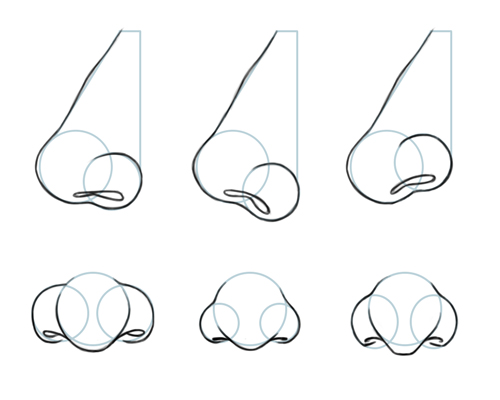

While eventually the initial strokes will be covered by more layers of shading it’s still good practice to maintain their proper distance and direction.įor the eyebrows try and apply the strokes in the direction of the growth of the eyelashes and keep a good amount of space between them to create the effect of hair. This is why you want to apply the shading gradually in several layers. If you press on the pencil too hard you may make some areas too dark in relation to others to the point where it no longer has enough dark value to create the correct difference between them. The goal of this step is to create something like a “shading map” for yourself. When you being the actual shading process make the initial layer of strokes fairly light. This means that most shadow will be cast downwards and the areas that and “indented” will tend to be darker. In this particular case it will be fairly generic as though the subject is outside during the day or in a well lit room with the light coming from above. Step 5 – Begin Shading Inner angled eyes initial shadingīefore you begin shading anything (eyes included) it’s a good idea to be aware of the setup of the lighting. You will want to leave these areas white when shading. The shape of these highlights will generally be determined by the shape of the light source. Afterwards add a small outline of the highlights inside each pupil (light being reflected by the eye). Step 4 – Draw the Highlights & Other Details Inner angled eyes line drawingĪt the inner end of each eye draw the tear duct areas. You can also add another line to the bottom of each eyelid to show their edges/thickness. If you make the entire iris visible the eyes can end up with a “crazy stare” kind of look. As the eyes in this case are in a fairly relaxed/natural state the top portions of these should be covered by the eyelids. Step 3 – Draw the Irises & Pupils Inner angled eyes details drawingĮrase the guide lines from the first step and inside each eye draw the iris and pupil. These will help define the shape of the “around the eyes” area of the face.


After that add the bridge of the nose that will merge into the eyebrows as shown in the example.įinally you can also add a pair of curves between the outer parts of the eyebrows and the out tips of the eyes. Step 2 – Add the Eyelids Inner angled eyes eyelids drawingĪround the shapes of the eyes draw the outlines of the eyelids. At this stage you can do it with just a pair of lines for each eyebrow.įor this pair of eyes the eyebrows will be angled a fair bit towards the nose similar to the eyes. Also be sure to space the eyes far enough apart that you can fit at least one other eye between them.Īs short distance above the outlines of the eyes add the basic shapes of the eyebrows. Draw the outlines of the eyes based on these lines (as shown in above example). Step 1 – Draw the Outlines of the Eyes & Eyebrows Inner angled eyes construction drawingīegin by making a pair of lines that will act as guides to help you make sure that the top and bottom halves of each eye are similar in proportion to the other. The “eye angles” in this tutorial refer to the balance of the overall shape of each eye. However please don’t confuse the angled guide lines in the next step with the angle of the eyes. This example of the eyes is angled downwards towards the nose. Drawing Inner Angled Eyes Inner angled eyes drawing step by step The rest of the examples have less instructions to avoid repetition.

It’s recommended that you read over these regardless of which pair of eyes you want to draw. Very importantly please note that as the shading process for each set of eyes is very similar so the first example provides the most detailed instructions. The lines in some of the examples have been made darker simply so that they are easier for you to see. For this reason please be sure to make very light lines that will blend into the shading once you are finished. In this case the line drawing will be used as more of a “construction frame” for the shading instead of a stand alone drawing. The instructions and examples consist of two parts, the line drawing and the shading. The three variations of eyes in this tutorial include:
#Drawing different nose shapes how to#
This tutorial shows how to draw three common variations of eyes with step by step pencil drawing examples and instructions for each type.Įyes different types drawing step by step


 0 kommentar(er)
0 kommentar(er)
